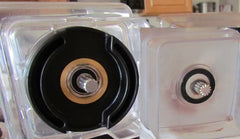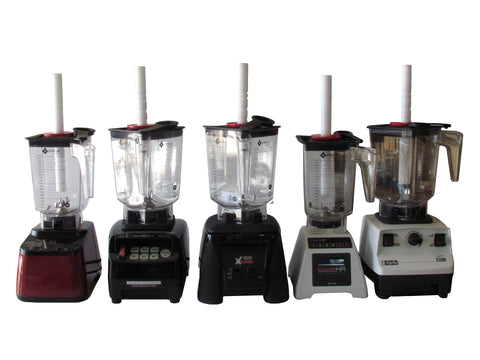Pros and Cons of Aftermarket Replacement Blender Containers October 26 2015
 Aftermarket components and products are produced and sold to consumers in various different markets. It is very common in the consumer technology industry as well as in the automotive industry. Aftermarket products and components / replacement parts usually are an indicator that a certain product is very popular. It is also associated to money savings to the consumer. In the pharmaceutics industry, the term ‘generic’ is often used. Perhaps the latter is not really an aftermarket component in the sense this article is referring to.
Aftermarket components and products are produced and sold to consumers in various different markets. It is very common in the consumer technology industry as well as in the automotive industry. Aftermarket products and components / replacement parts usually are an indicator that a certain product is very popular. It is also associated to money savings to the consumer. In the pharmaceutics industry, the term ‘generic’ is often used. Perhaps the latter is not really an aftermarket component in the sense this article is referring to.
Blendtec®, Waring™ MX series of blenders, as well as Vita Mix® blenders are just three blenders from among a few other high performance smoothie blenders, of which a whole ton of are presently in use globally. It is estimated some 100 million of these particular powerful blenders roam the Earth in peoples’ kitchens and restaurants. About 60% of them, according to a study, are not in use. Why they are not in use is not really known. It could be in part a reluctance of user-interest and/or that and being broken down and just never having gotten to it to make a ‘replacement’ attempt of a broken blender blade or jar.
Most people are not very technically inclined. When their jar breaks, or the blade bearing of blade assembly in the jar seizes up, they interpret it as a broken down blender. The blender gets put aside until time and effort is made to make the warranty call, or if the warranty is expired, a new jar is purchased. If the blender is misdiagnosed as dead and broken, not being sure what is bad, time may tell that these high percentage consumers have their ‘broken down’ blender collect dust in storage.
In the case of these blenders, aftermarket components, such as replacement blade assembly cutting units (the knife, or in other words the blades) will be a money saver and a convenient solution, if only the consumer in possession of the broken down Blendtec or Vitamix blender (or Waring and others – non one brand in particular) would dig into finding out more about alternative replacement parts.
units (the knife, or in other words the blades) will be a money saver and a convenient solution, if only the consumer in possession of the broken down Blendtec or Vitamix blender (or Waring and others – non one brand in particular) would dig into finding out more about alternative replacement parts.
It is however not just about replacing a broken part, in the aftermarket industry. Additional jars offer opportunities to have spare parts for just in case, and an additional container for the purpose of alternating blender jars. The Kosher blending enthusiasts of course always use 2 jars. There are certain advantages to the number 2, two jars in possession rather than just one, especially when they are different. Blending is often better in one jar than in another depending on what one blends up.
The Alterna™ Jar, the aftermarket jar reported on in this article, brings several advantages to the table. Current users have reported an increase in finer blending, smoother concoctions, more thorough emulsification. The actual blending capacity is 80 ounces of ingredients. The jar is also, like the OEM factory containers, a BPA-Free copolyester material, with stainless steel removable blade assembly, and tamper stick accelerator tool available.
The advantages are certainly not always enticing to everyone, for example money savings. Some people may find a Blendtec Fourside replacement container for $60 plus shipping. Why would one purchase an aftermarket non-factory container for $80 including shipping? Those that do, are not buying it for immediate savings, or not for money savings reasons at all. The reason for that is that the old type Blendtec jar is always the same, no improvement with a blade that is just going to break again eventually and a new complete whole jar has to bought again, even if the price is only $60 instead of $80. If that same scenario happens with the Alterna Jar, one would have to simply just purchase a replacement jar for $35, instead of $60 for a new jar by Blendtec. Of course, Alterna has a package deal available for real blender enthusiasts, which is the jar with a blade already installed, plus an extra replacement blade for $99, including shipping.

Let’s assume the Alterna blade goes out at the same time the Blendtec blade would seize up, in the Blendtec jar. At that point the OEM factory enthusiast would have spent $120 while the aftermarket consumer fan spent only $99. But, again, not everybody may be interested in the cost factor issue. The Alterna jar blends better, blends bigger volumes, and is a heavier duty jar overall.
Waring MX series blenders, those that are truly 3.5 horsepower monsters, come with rather inferior blade and jar design. The OEM Waring container has a poor warranty, to one hand. On the other hand, the vertical jar wall goes into the bottom of the jar without curvature straight in a straight 90 degrees. There are numerous reports of poor performance and warranty issues and poor customer service. Plus a 2 Liter replacement jar from Waring costs anywhere from $120 to $160. The Alterna aftermarket container configured for the Waring MX series blenders performs better, hold up better and costs less as well.
Vitamix… ditto to Waring.
In conclusion, aftermarket is not for everyone. OEM has its advantages especially when the blender is still under warranty. In Europe or in Asia, Australia and South America, Blendtec and Vitamix warranties are general between 2 to 4 years maximum. Waring already has a 2 in 1 year warranty in the USA which means 2 year parts and 1 year labor. Costs of replacement jars in non-USA markets are mostly prohibitively expensive. In Brazil a Blendtec Fourside jar is $150 USD and $200 has to be coughed up for a Wildside jar. The same in Europe, the UK, in Australia and all over the Asian Rim.
Those consumers that consider the advantage of aftermarket recognize that aftermarket means that the OEM brands are going to stick around more likely longer, aftermarket components will bring the prices down everywhere, and aftermarket blender containers offer a convenience, a choice, a versatility, especially when this one blender jar actually fits on all, Vitamix, Waring, JTC Omni, Klarstein, Optimum, Omega blenders, and the Blendtec blenders.
Note, how the Alterna Jar sits on the various blenders, straight on Blendtec, and diagonally by 45 degrees on Vita Mix, Waring, and JTC Omni blenders. This is a little different than with any other blender jars, but it works, and is actually mostly designed that way so the same container can be used namely on different blender bases, such as the Blendtec and the Waring kinds.
Pros and Cons, if a blender were still under warranty, and consumer wanted to use the aftermarket Alterna jar, it is most likely assumed that the given factory might tell the consumer that such application is not authorized and will likely void the warranty. If the Blender motor might break, such use opens up the question of whether the jar and the aftermarket blade bearing may have contributed to, or perhaps was the cause of premature motor failure. However, there are several issues to that.
If the blade seizes up on any blender jar, it is the consumer's responsibility to stop using it, replacing the whole jar or the blade assembly from the Alterna jar with removable replaceable blade assembly unit. Plus, who is to say that a given consumer has not already over exerted their blender motor when running the blender motor with a seized up blade unit in their jar for far too long of a time and have not noticed it. Sure, if it can be proven that there is a relationship between the Alterna jar aftermarket container and a broken motor, it would only be fair that warranty is assumed, if there is a warranty. However, in every possible scenario, it should be taken into account, that it just cannot be proven. There are too many variables from abuse to a defect from the blender factory to begin with or simply just heavy normal use and therefore wear and tear having lead to an early natural death of said blender motor. It is simple, anyway, it should be considered to always pay close attention to the condition of the blade assembly and bearing, no matter if the user operates an OEM factory brand blender container or an aftermarket blender jar.
In any case, OEM brand factories should be exited about aftermarket blender jar availability. It is a sign that the market has reached a certain saturation and the brand is here to stay. The consumer views more choices and availability as convenient and as a great advantage, actually and eventually bringing down prices and helping to improve quality.
Copyright 2015 (C) Alternajar.com LLC

 Do you have a paunchy pooch? It seems the obesity epidemic has spread from humans to our dogs. It is estimated that 45% of American dogs are overweight (that’s over 35 million) and it’s not just puppy fat. Obesity tops the list of nutrition related health problems in canines. It is as unhealthy for dogs to be overweight as it is for humans.
Do you have a paunchy pooch? It seems the obesity epidemic has spread from humans to our dogs. It is estimated that 45% of American dogs are overweight (that’s over 35 million) and it’s not just puppy fat. Obesity tops the list of nutrition related health problems in canines. It is as unhealthy for dogs to be overweight as it is for humans.
